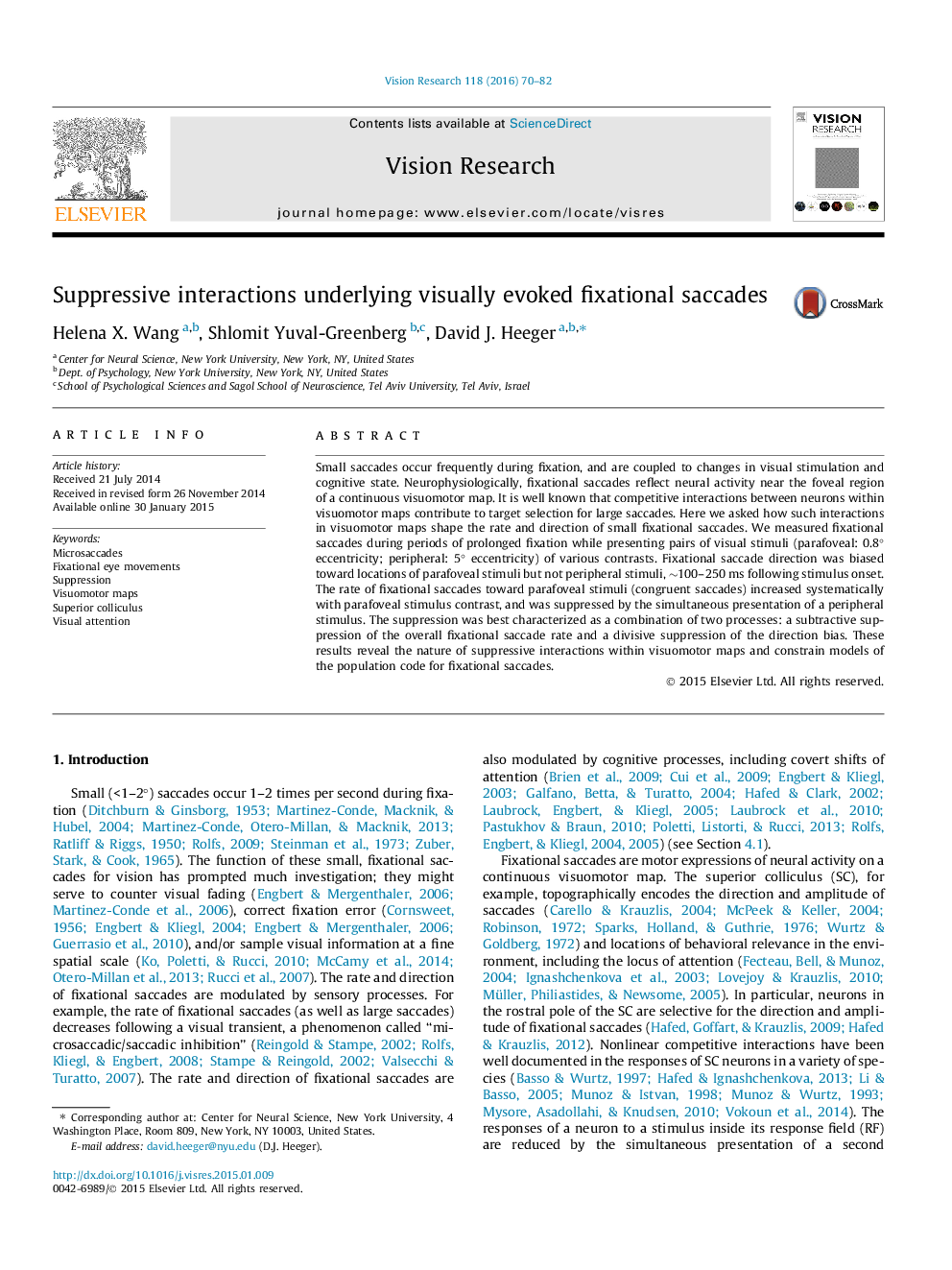| Article ID | Journal | Published Year | Pages | File Type |
|---|---|---|---|---|
| 4033582 | Vision Research | 2016 | 13 Pages |
•Fixational saccades depend on interactions between pairs of visual stimuli.•Direction of saccades biased toward parafoveal stimuli with increasing contrast.•Direction and rate suppressed by simultaneously presented peripheral stimuli.•Subtractive suppression of saccade rate and divisive suppression of direction bias.•Results characterize competitive interactions within visuomotor maps.
Small saccades occur frequently during fixation, and are coupled to changes in visual stimulation and cognitive state. Neurophysiologically, fixational saccades reflect neural activity near the foveal region of a continuous visuomotor map. It is well known that competitive interactions between neurons within visuomotor maps contribute to target selection for large saccades. Here we asked how such interactions in visuomotor maps shape the rate and direction of small fixational saccades. We measured fixational saccades during periods of prolonged fixation while presenting pairs of visual stimuli (parafoveal: 0.8° eccentricity; peripheral: 5° eccentricity) of various contrasts. Fixational saccade direction was biased toward locations of parafoveal stimuli but not peripheral stimuli, ∼100–250 ms following stimulus onset. The rate of fixational saccades toward parafoveal stimuli (congruent saccades) increased systematically with parafoveal stimulus contrast, and was suppressed by the simultaneous presentation of a peripheral stimulus. The suppression was best characterized as a combination of two processes: a subtractive suppression of the overall fixational saccade rate and a divisive suppression of the direction bias. These results reveal the nature of suppressive interactions within visuomotor maps and constrain models of the population code for fixational saccades.
